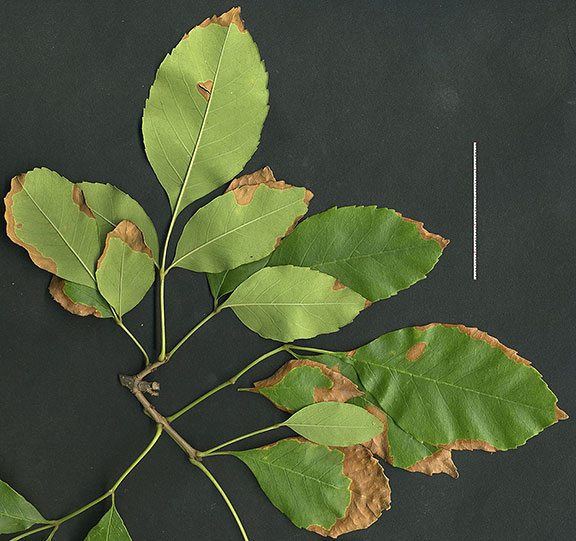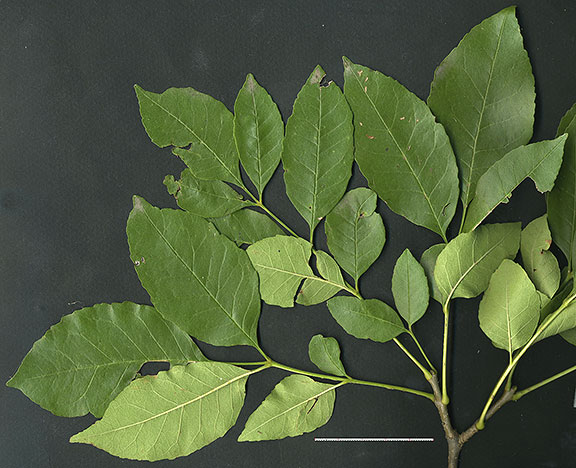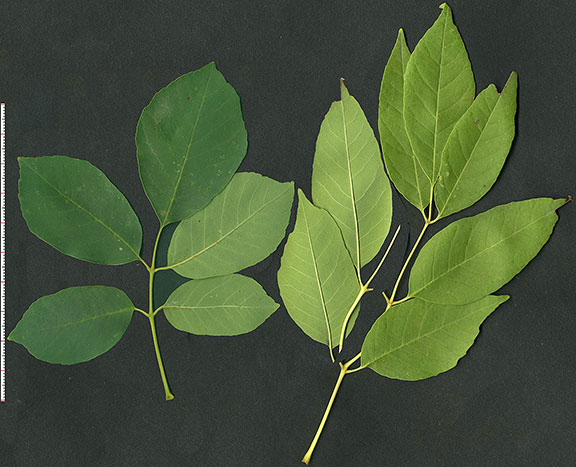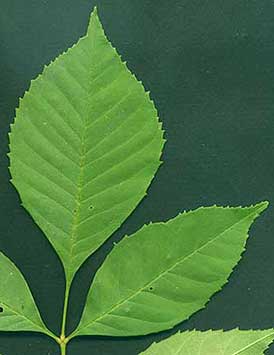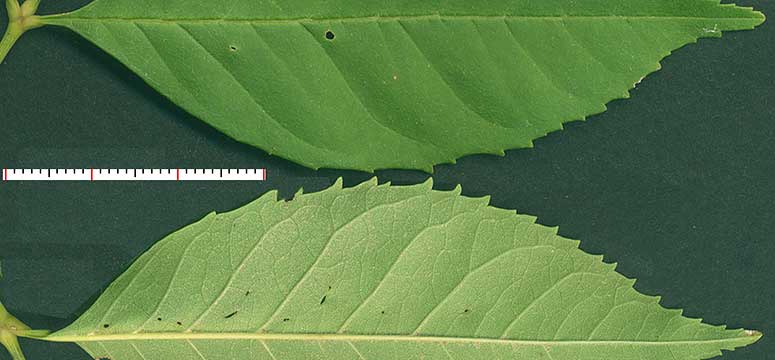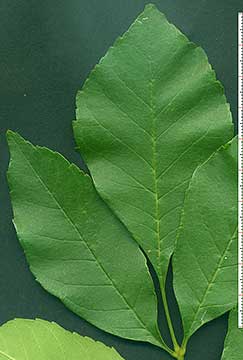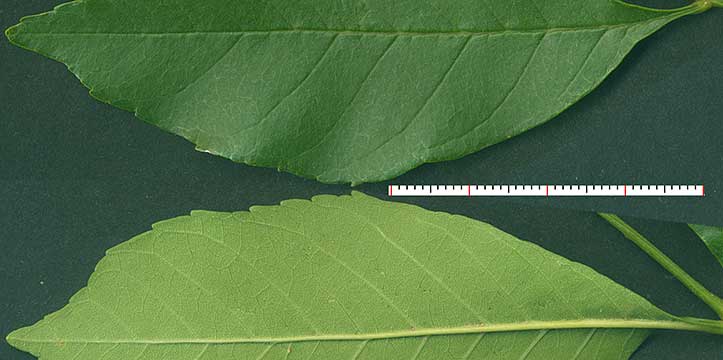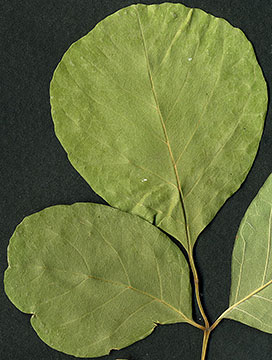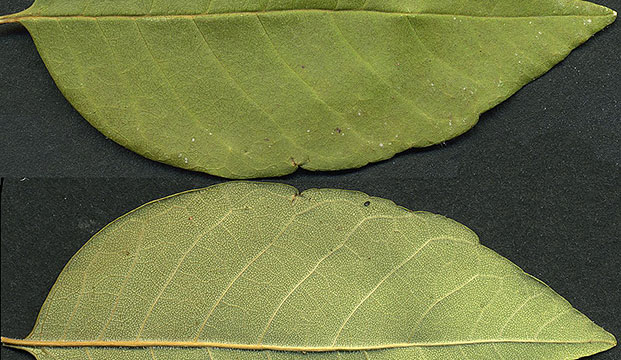- Samaras:
- F. berlandieriana: mostly 2-winged but often 3-winged among the 2-winged ones,
body > 1.5 cm long, wings gradually expanded from the base to distal 1/3 of body and narrowly flanging the body
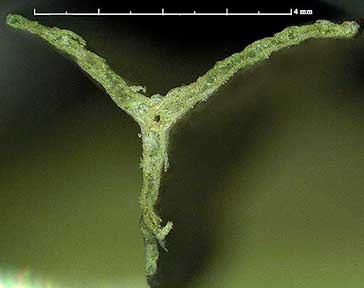
3-winged samara cross section at top of body
- F. pennsylvanica: body > 1.5 cm long, consistently 2-winged, wings decurrent from the proximal 1/4 of body, then abruptly expanded from the distal 1/4(–1/2) of body
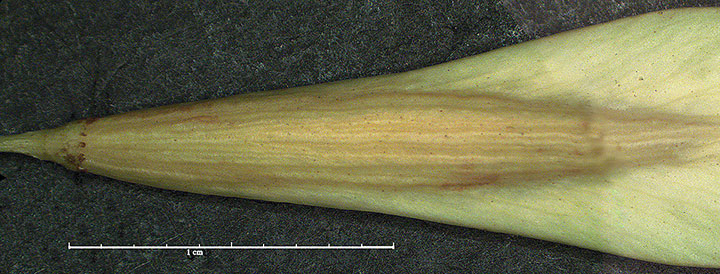
- F. albicans: body ± 1 cm long, wings only slightly decurrent on the distal 1/4 of body
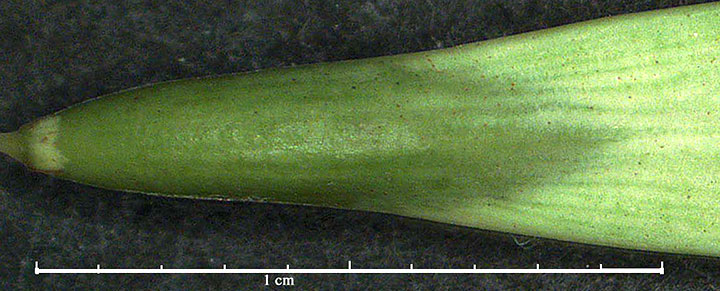

- Leaf scars:
- F. berlandieriana: shallowly hemispheric, 2.2–3 mm wide, apex shallowly concave
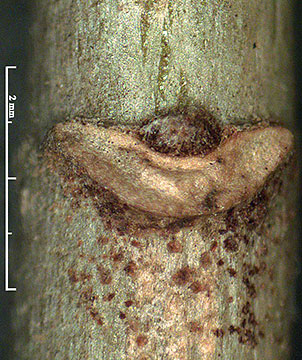
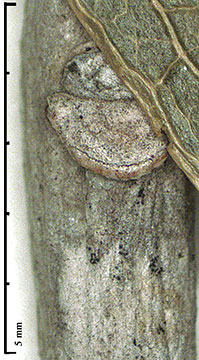
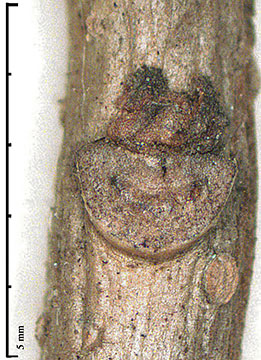
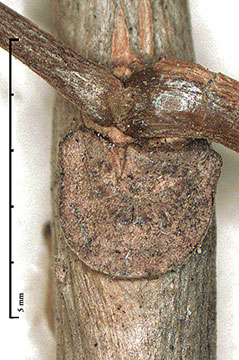
Travis Co. Cameron Co. Tarrant Co. - F. pennsylvanica: shield-shaped, broadly oblong-ovate, 3–4 mm wide, apex truncate to very shallowly concave
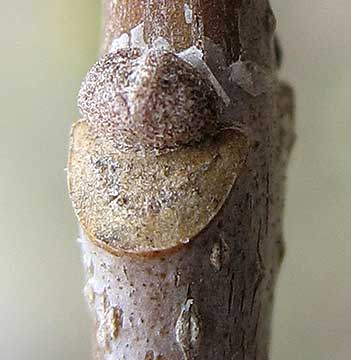
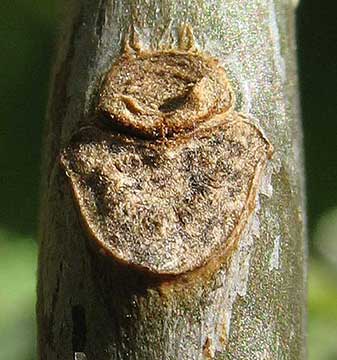
- F. albicans: depressed obovate, the upper margin shallowly concave to slightly notched with slightly flaring margins
When I presented the two images from N. Hays Co. to Nesom for comments, he noted that they seemed "more concave than typical" and not depressed obovate. He suggested I examine herbarium collections, which gave me the two images from Travis Co. I also found a photo at the Texas A&M site with winter leaf scars which corresponds to Nesom's description. My impression from checking the collections from Central Texas was that they show great variation in the depth of the concave apex, defying a 'typical' form, and roughly represented by the range show in the four examples below. This was in sharp contrast with the consistently deeply concave leaf scars of F. americana, white ash, which, in the Texas collections I examined, did not show much variation.
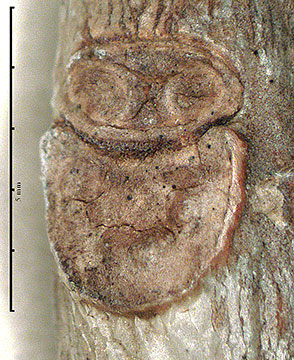
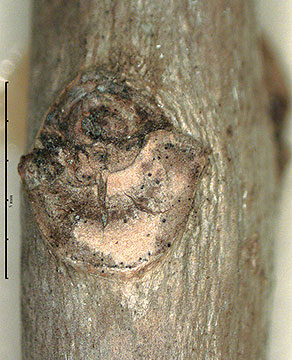
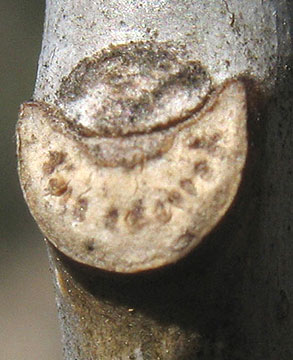
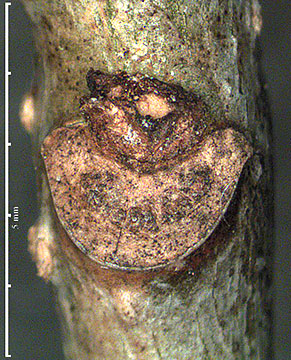
Travis Co. N. Hays Co.
I am not happy with the leaf scar images given below, from stems collected in September and from herbarium collections. Perhaps leaf scars for identification purposes need to be examined with stems with recent natural leaf fall in late fall and winter. This is a period when few herbarium collections have been made. Scars of leaves torn from the stem and on stems that have grown subsequent to leaf fall are distorted in unpredictable ways. Herbarium collections generally don't provide enough material to determine what might be typical for the tree sampled. Once mounted only one side of a stem remains clearly visible.
A collection of over 130 leaf scars in mid November showed wide variation.
- Leaflet abaxial vestiture:
- Glabrous, with nothing obscuring the epidermal cells
F. berlandieriana:

- F. albicans: glaucous, with a dense overlay of white-reticulate wax, may have hairs


- F. albicans: glaucous, with a dense overlay of white-reticulate wax, may have hairs
